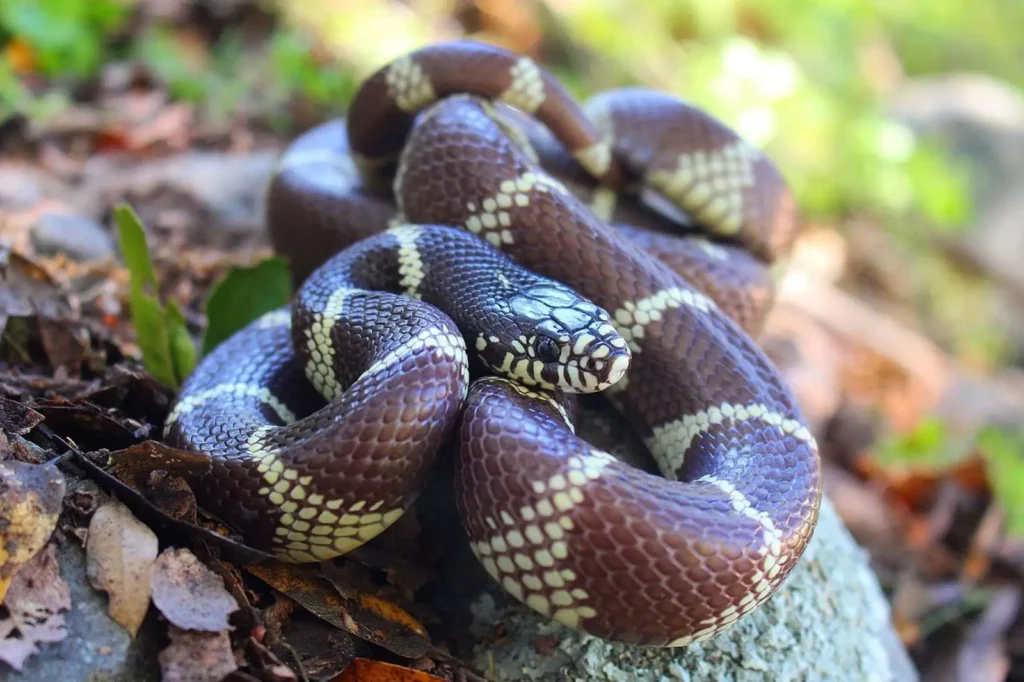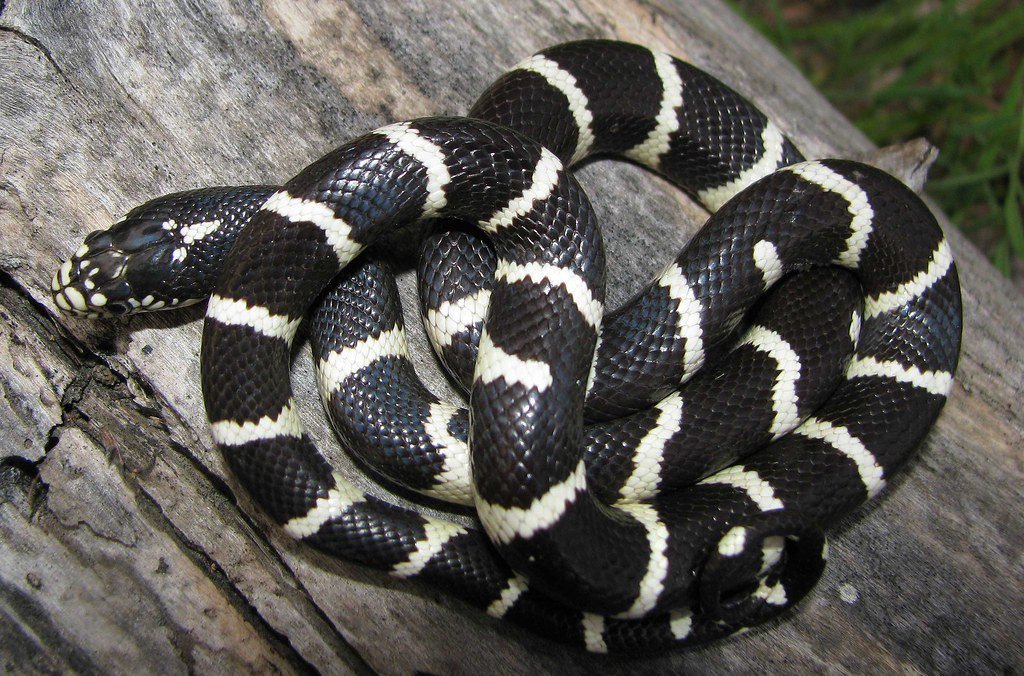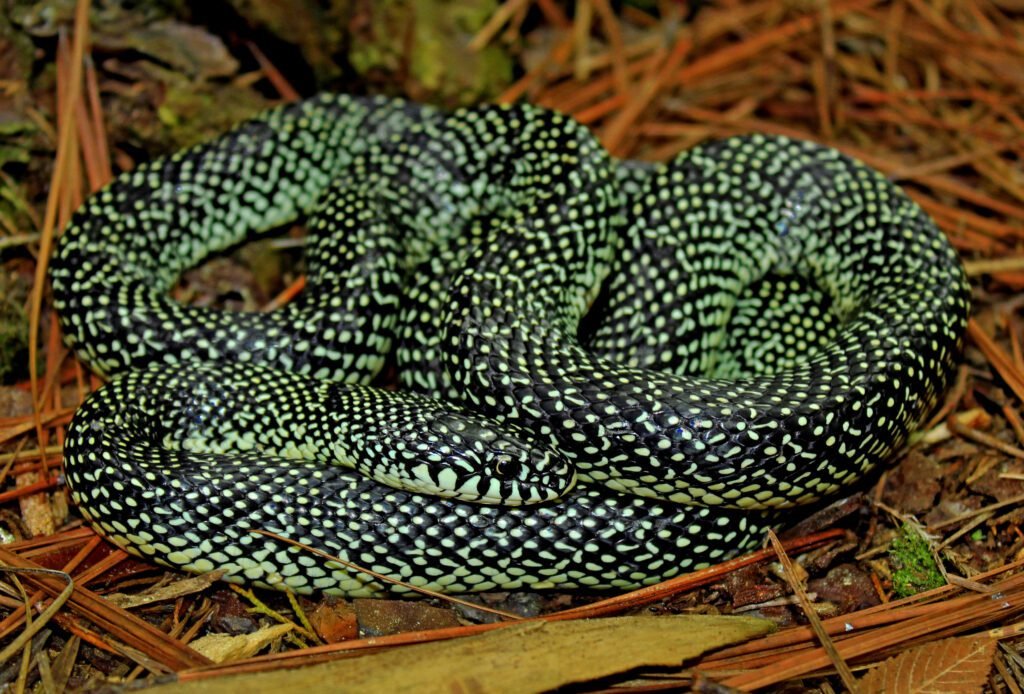


Can Snakes Sense Pregnancy? (Myth Debunked)
February 28, 2024


How Big Can Guinea Pigs Get? (Different Breeds Compared)
February 29, 2024King snakes are fascinating reptiles known for their striking patterns and ability to adapt to various environments. Found across the Americas, these non-venomous snakes thrive in forests, grasslands, and deserts, showcasing their versatility.
In the previous blog post, we discussed if snakes can be pets, this blog post aims to explore snakes as pets, examining their care requirements, temperament, and overall suitability for home life.
Whether you’re a seasoned reptile enthusiast or considering your first snake, this guide will provide valuable insights to help you decide if a king snake is the right companion for you.
Are king snakes good pets?
King snakes make excellent pets for reptile enthusiasts due to their docile nature, ease of care, and resistance to common diseases. They require minimal daily maintenance, making them ideal for beginners and experienced owners.
King snakes are renowned for their adaptability and relatively straightforward care requirements, including a proper habitat with controlled temperature and humidity and a diet primarily of rodents.
Their docile temperament makes them easy to handle, and their disease resistance contributes to a long lifespan with proper care. While they might not offer the interactive companionship of traditional pets, king snakes provide a unique and rewarding experience for those interested in reptiles.
Their low maintenance and fascinating behaviors make them a compelling choice for anyone looking to explore the world of pet snakes.


California Kingsnake. Credit: Connor Long
King Snake Species
King snakes are popular among pet lovers, with several species being especially favored for their striking looks and manageable care requirements. The California king snake and the Mexican black king snake stand out as common pets.
The California king snake is known for its striking patterns, including bands, stripes, or speckles in a mix of black, white, and sometimes brown. On the other hand, the Mexican black king snake boasts an elegant, glossy black appearance that makes it a unique and attractive pet.
In the wild, king snakes are solitary creatures known for their hunting prowess. They’re not venomous but powerful constrictors, preying on various creatures, including rodents, birds, and even other snakes. King snakes adapt well to captivity when kept as pets, though they maintain their solitary nature.
King snakes are generally docile, making them excellent for handling, even for beginners. However, like any animal, each snake has its own personality.
Some may be more active or curious, while others might be shyer. With regular, gentle handling, most king snakes can become quite tame, enjoying their interactions with their human caretakers.
Also, Read: Can Snakes Grow Their Tails Back? (Answers & Facts)
What should you consider before getting a king snake as a pet?
Before welcoming a king snake into your home, it’s essential to consider several factors to ensure you’re prepared for the responsibility. From legalities to habitat setup, here’s what you need to know.
1: Legal and Ethical Considerations
- Check Local Laws: Ownership laws for exotic pets like king snakes vary by location. It’s essential to verify that owning a king snake is legal in your area to avoid any legal issues.
- Ethical Sourcing: When acquiring a king snake, aim to purchase from reputable breeders or adoption centers. Ethical sourcing helps prevent the support of harmful wildlife trade and ensures your snake has been raised in a healthy environment.
2: Lifespan and Long-Term Commitment
- Average Lifespan: King snakes can live in captivity for 20 years or more with proper care. This long lifespan means owning a king snake is a significant long-term commitment, requiring consistent care.
- Commitment of Care: Caring for a king snake over the years involves regular feeding, habitat maintenance, and health monitoring. Potential owners should be prepared for the time and financial investment required.
3: Space and Habitat Requirements
- Size of Enclosure: A secure enclosure is crucial for a king snake’s well-being. A young snake can start in a smaller terrarium, but an adult will need a larger space, typically at least a 20-gallon tank.
- Temperature, Humidity, and Lighting: King snakes require a warm environment with a gradient of temperatures (75-85°F with a basking spot around 88-90°F) and moderate humidity levels. Proper lighting, including access to a natural light cycle, is also essential for their health.
4: Diet and Nutrition
- Feeding Habits: In captivity, king snakes typically eat pre-killed rodents. The prey size and type will depend on the snake’s size and age.
- Frequency: Young snakes may eat twice a week, while adults usually eat once or every other week.
- Balanced Diet for Health: Providing a balanced diet is crucial for preventing nutritional deficiencies and supporting overall health. It’s also important to manage the size and frequency of meals to avoid obesity.


Common King Snake
Pros of having a king snake as a pet
King snakes can be wonderful pets for the right owner. Their care requirements, temperament, and health resilience offer several advantages, especially for those new to keeping snakes.
Here’s a look at some pros of having a king snake as a pet.
1: Relatively Low Daily Maintenance
- King snakes are known for their low maintenance needs, especially compared to other pets like dogs or cats.
- They don’t require daily walks or constant attention. Their feeding schedule is not customary, and with a properly set-up habitat, cleaning is minimal, usually only needed every few weeks.
- This makes them an excellent choice for pet owners who want a pet that is easier to care for daily.
2: Temperament
- One of the most appealing aspects of king snakes is their temperament. They are typically very docile and tolerant of handling, making them suitable for reptile-keeping beginners.
- Regular, gentle handling can help them become even more accustomed to human interaction, reducing stress for the snake and making the experience more enjoyable for the owner.
- Their calm nature makes them less likely to bite, making them a safer choice for families with older children.
3: Health
- With proper care, king snakes are generally hardy animals less susceptible to the common health issues that can affect other exotic pets.
- They’re resilient to many diseases and parasites, provided they’re kept in a clean, well-maintained environment and fed a proper diet.
- This resilience can lead to fewer vet visits and a longer, healthier life, making them a cost-effective option for pet owners interested in reptiles.


Speckled King Snake
Recommended Reading: Can snakes eat themselves to death?
Cons of having a king snake as a pet
While king snakes have many benefits as pets, there are also some drawbacks. These cons are primarily related to their feeding requirements, habitat maintenance, and the nature of interaction they offer.
1: Feeding Live Prey
- One of the most significant challenges of owning a king snake—or any snake—is feeding them prey, such as mice or rats.
- While many owners opt for frozen/thawed prey to avoid the ethical dilemmas and risks associated with live feeding, thawing and presenting the prey can still be unpleasant for some.
- Additionally, feeding live prey can pose a risk to the snake, as the prey might injure the snake in defense.
2: Regular Enclosure Maintenance
- Although king snakes are low maintenance compared to many other pets, their enclosures require regular cleaning to prevent the buildup of bacteria and parasites.
- This includes removing waste, uneaten food, and shed skin, as well as periodically replacing the substrate and disinfecting the habitat.
- Proper maintenance is crucial for the snake’s health but can be time-consuming and requires a commitment from the owner.
3: Not a “Social” Pet Snake
- King snakes do not offer the same interaction or companionship as traditional pets like dogs or cats.
- They are solitary by nature and do not seek social interaction with humans.
- While they can become accustomed to handling, they do not form bonds with their owners like mammals can.
- A king snake may not fulfill the desires of individuals seeking a pet for companionship or interactive play.
How to prepare your home for your king snake pet?
Welcoming a king snake into your home requires thoughtful preparation to ensure a safe and comfortable environment for your new pet.
Here are the key steps to get started:
- Set Up the Right Habitat: Choose a secure enclosure that provides enough space for your snake to move freely. A 20-gallon tank is a good start for young snakes, but larger snakes need more space.
- Maintain Proper Temperature and Humidity: Install heating elements to create a temperature gradient within the enclosure and monitor humidity levels to mimic their natural environment.
- Create a Comfortable Living Space: Include hiding spots, climbing branches, and a water bowl in the enclosure for enrichment and hydration.
- Prepare for Feeding: Have a supply of appropriate-sized frozen/thawed rodents and familiarize yourself with safe thawing and feeding practices.
- Safety Measures: Ensure the enclosure is escape-proof and located away from direct sunlight or draughty areas to prevent stress or harm to your snake.
Editor’s Pick: Milk Snake Vs. Corn Snake | Which is Best For Beginners?
Conclusion
In conclusion, king snakes are low-maintenance, docile pets with simple dietary and habitat needs, making them suitable for beginners to reptile keeping. However, their requirement for live or frozen prey and solitary nature may not appeal to everyone.
With a lifespan of over 20 years, they require a long-term commitment. However, king snakes can be fascinating pets for those ready to meet their specific care needs, offering the right owner a unique and rewarding experience.



